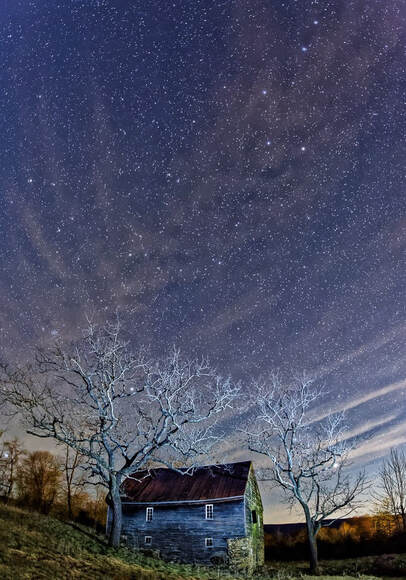 Night sky; Credit: Joyce Harman Night sky; Credit: Joyce Harman Today, more than eighty percent of the world’s population can no longer see the Milky Way at night due to the glow of artificial light emanating from manmade structures. Even more concerning is that light pollution is growing at an estimated ten percent each year. The good news is that light pollution is one of the most combatable forms of pollution. We all can use turn off lights, use responsible lighting and help to educate others about the effects of artificial light at night. The December 12th Old Rag membership meeting will feature a panel discussion featuring the problem of light pollution. Dark sky advocates: Tom Reinert, Torney Van Acker, and Joyce Harman will examine the unintended negative impacts of artificial light at night on wildlife, humans, and the night sky, as well as strategies to promote responsible outdoor lighting. 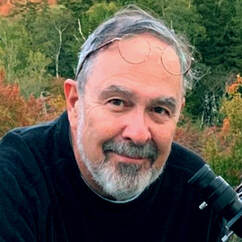 Tom Reinert Tom Reinert President, DarkSky International Tom Reinert is a retired Washington, D.C., lawyer who spent most of his career representing airlines and railroads in labor and employment matters, including extensive experience translating scientific experts for lay decision-makers. He is a graduate of Harvard College and the Harvard Law School. His environmental activism included a decade fighting for water quality with local riverkeeper organizations on Chesapeake Bay in Maryland. In 2013, seeing the Andromeda Galaxy for the first time with his naked eyes from atop Kitt Peak rekindled an interest in astronomy and a desire to eliminate light pollution. Currently residing in Northern Virginia, he and his wife Chris travel extensively in the western United States visiting dark sky locations. For several years, he has assisted Dark-Sky as a volunteer on legal and public policy issues at the national level. https://darksky.org/who-we-are/board/. 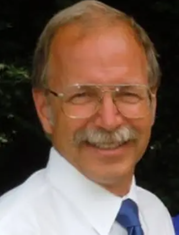 Torney Van Acker Torney Van Acker Torney Van Acker is a retired electrical engineer and capital projects development manager who has owned farm property in Rappahannock county since 2002, becoming a full-time resident in 2016. Torney grew up on a dairy farm in northwest New Jersey, an area that closely resembles Rappahannock County. His passions are organic farming and gardening, sustainable land use, hiking, running and dark skies preservation. Torney lives in Castleton, Virginia with his wife Sylvie of 44 years in a custom-built home that they designed. They are blessed with three adult married children and two grandchildren, whom they see often. Torney currently serves on the Board of the Rappahannock League for Environmental Protection (RLEP) and until 2021, served on the Board of the Rappahannock County Recreational Facilities Authority (RCRFA) managing the Rappahannock County Park. On behalf of the RCRFA, he obtained a Dark Sky Park designation for the County Park from the International Dark-Sky Association (now known as DarkSky International). It was the third park in Virginia and the third county park in the US to be so designated. As an RLEP Board member, Torney launched and managed a free outdoor lighting replacement program for county residents that replaces old lighting fixtures with newer energy-efficient dark sky friendly models. Over 250 lights have been replaced since 2018. 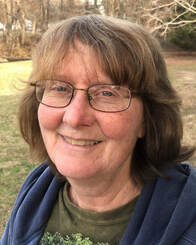 Joyce Harman, astrophotographer Joyce Harman, astrophotographer Joyce Harman was born and raised in Washington D.C., but her time was always spent in the country riding horses. She became a veterinarian in 1984, then worked in England and Ireland for a few years before coming back to the states. Currently, Joyce is retired from active veterinary practice and lives in Flint Hill, VA. Joyce grew up in a darkroom and her camera has never been far from her side in all her travels. She is a founding member of the Old Rag Photography Gallery, a cooperative in Rappahannock county, VA. She also exhibits with Middle Street Gallery in Washington, VA. Joyce is president of the Manassas-Warrenton Camera Club and lectures to photography groups on various topics. She teaches photography classes and judges at camera clubs in the area.
0 Comments
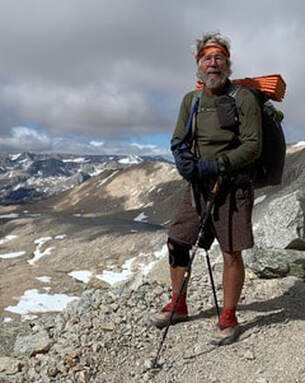 Doug Harpole at Forester Pass on Pacific CrestTrail Doug Harpole at Forester Pass on Pacific CrestTrail Doug Harpole was born in Shreveport, Louisiana and grew up around Houston, Texas. His earliest memories are of the many family camping trips, including visits to state parks, national forests and the “big ones” out west: Grand Canyon, Carlsbad Caverns, Arches, and Bryce Canyon. In 2018 Doug hiked the entire Appalachian Trail and last year completed half of the Pacific Crest Trail before a knee injury temporarily sidelined him. The Pacific Crest Trail traverses 2,650 miles from Mexico to Canada. He plans on finishing the remaining miles sometime next year. Doug has lived in Virginia for 30 years. He received his Bachelor’s degree from Texas A&M and his Master’s degree from Virginia Tech, both degrees related to Wildlife Conservation. He then worked at the VT Extension Service for several years. He retired in 2016 and lives outside of Amissville in Fauquier County. When and how did you become interested nature and the natural world? Doug can’t remember a time when he didn’t want to be outside. When he was 4 or 5 years old he was fascinated with the bats that flew around the street lights outside of his family’s home. He would throw things up in the air with the hope that a bat would try and snag it. He was constantly bringing things home that fascinated him – but he wasn’t allowed to bring anything into the house. When he saved up his allowance and bought a microscope, a whole new world opened up for him. What is the most amazing thing you have experienced in nature? Doug shared that while researching terrestrial salamanders he had spent many nights crawling in the forest during rainstorms. “You see a whole different world crawling on the forest floor at night in the rain,” says Doug. He never thought about slugs much until he saw a pair mating one night. “They are translucent and hermaphroditic so there was a lot going on,” he said. On a different scale, he worked several winters studying overwintering geese in the coastal marshes and rice prairies of Texas. “It’s quite a rush when tens of thousands of geese take flight and you are standing right under them.” Describe what you do on your own property to support a healthy ecosystem. Doug and his wife live in a house on four acres near the Rappahannock River where they actively work to attract wildlife of all kinds. They have several different bird feeders and enjoy being able to identify individuals and family groups of birds that visit regularly. They actively work to reduce invasive plants and create an environment that provides food and shelter for all kinds of wildlife. Currently, their growing pollinator garden is planted mostly for wasps – no surprise! Doug also enjoys identifying and encouraging growth of native ferns and mosses. He likes to provide habitat features that make the wildlife more accessible for visiting grandchildren. They have toad houses, wasp/bee houses, stumps (that Doug has drilled multiple holes in), year-round water supply and rotting logs and brush piles that are visited by many animals. He maintains a packed sand area for solitary wasps nests. Doug installed cover boards in wet areas that are used by salamanders and toads as well as boards in dry areas that attract snakes, lizards, and skinks where they hide, breed and eat. Their property abuts 200 undeveloped forested acres with numerous springs and access to the Rappahannock River that provides a great playground. What is something you would like to share with ORMN members? “Think small” was Doug’s recommendation. He said that from his first microscope to the magnification loupe he carries with him, he is always excited by the wildlife that most people never see. When Doug and I first began discussing a possible presentation he could make to the ORMN members, he asked if our members would be interested in an education program on wasps. He explained that he wasn’t an entomologist but had started to study them on his own several years ago. When Doug started to talk about wasps he became very animated, explaining “they are incredibly diverse, with 130,000 species compared to 20,000 species of bees.” He said the vast majority of wasps are “not the stinging kind” and noted the integral part of the ecosystem that wasps represent. “Bees always get great public relations but wasps are more diverse,” he explained. “They are a key insect predator and tend to have a bad reputation. I would like to improve their image!” Interviewed by Charlene Uhl September 2023 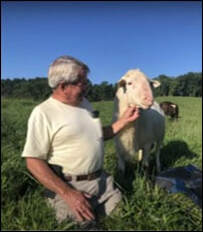 Paul Guay was born in Washington DC and grew up in Hyattsville, Maryland. His family moved to Sterling Park, Virginia in 1962 and he has been a Virginia resident ever since. Paul attended George Mason University, married, and had several children. Family responsibilities meant he needed a “real job” so he left the university and was employed as a toxicology laboratory clinician and later as a clinical chemistry technician. Chemical analysis at that time was performed manually and, as he explained, “You had to know something about chemistry in order to do your job.” He later was employed by the U.S. Postal Service and delivered mail for 32 years until he retired in 2006. During these years Paul became fascinated with landscape design and installation. On a volunteer basis, he designed and installed a pollinator garden in Evitts Run Park in Charles Town, West Virginia. The planting included trees, shrubs, and flowers native to the Chesapeake Bay watershed. He also worked with Charles Town’s Planning Commission and Parks and Recreation Department to design and install an extensive “walk-through” garden of exotic trees and shrubs at Jefferson County Memorial Park in Charles Town. This 2 yearlong project was paid for by a $10,000 grant from the Charles Town Rotary Club. In 2019 Paul installed a conservation garden for a client near Front Royal, Virginia. This involved dealing with a 15-degree slope, a swale to control erosion, and native plants that would be the best fit for this challenging terrain. This project was funded by a competitive grant from the Lord Fairfax Soil and Water Conservation District and recently won their 2022 “District Urban Conservation Award”. Another project, which took 1-1/2 years to complete, was located in Winchester at the Museum of the Shenandoah Valley. He identified, catalogued, and photographed all of the 48 tree and shrub species found along the extensive network of hiking trails on the Museum’s grounds and compiled the results into a booklet. A copy now resides in the Museum’s Educators Library.
What is the most amazing thing you have experienced in nature?
Paul deeply appreciates Canada’s natural parks, both for their spectacular scenery as well as how they have made their parks accessible to all. He described trails, waterfalls, and glacier lakes that offered mobility-challenged individuals the ability to experience these works of nature. “You don’t see that extent of focus on accessibility in many national parks in our country,” he noted. He described some of the natural wonders in Canada, including the ice fields at Banff, and Jasper National Parks, the glacial lakes, and Bridal Veil Falls with a free-fall of 1,200 feet. “And these are all accessible to anyone who loves the natural world.” Describe what you do on your own property to support a healthy ecosystem. Paul and his wife have a small 4-½ acre farm in Clark County that is surrounded by horse farms and crop land. Their land abuts a 300-acre farm that is in a permanent conservation easement. He has seen bears, coyotes, turkeys, rabbits and other animals that are supported by this natural habitat. Paul has maintained an old 1900 tenant house on his land and established a pollinator garden around it that also supports wildlife. What is something you would like to share with ORMN members? Paul has self-published a number of books – both paperback and electronic – that focus on the detail in nature that is often overlooked. He takes close-up photos with a digital microscope and pairs these pictures with the history of who named specific birds, insects, plants and other things in nature – and upon what those scientific names are based. He has shared his photos with many individuals and groups including children from 10 years old to a number of women’s garden clubs through the area. “Children find this focus on the smallest aspects of a plant to be fascinating,” Paul explained. He feels that Master Naturalists should be interested in the reason that each species – be it plants, birds, insects, or other animals – has a Latin name and the “cool stories” behind each name. He looks forward to sharing some fascinating stories with the Old Rag Master Naturalist chapter at our August meeting. Interviewed by Charlene Uhl, ORMN June 2023 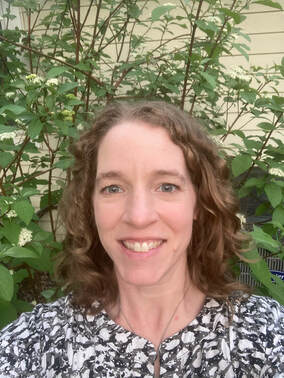 Patrice Nielsen in front of newly planted Red Osier Dogwood; Photo: Patrice Nielsen Patrice Nielsen in front of newly planted Red Osier Dogwood; Photo: Patrice Nielsen Patrice Nielson was born in central New Hampshire. She had four older sisters and they all spent as much time as possible outside in both the summer and the winter – hiking and swimming in the summer and snowboarding and other winter sports were where their parents could find them. When Patrice was in her teens, the local ski area offered a night student pass season costing only $150. Patrice’s mother would drop her off at 4 or 5 p.m., often with a couple friends, and come get her at 9 or 10 p.m. for bed. This was before cell phones and nobody thought there could be any problem with leaving your kids to enjoy night skiing. In an emergency, there was always a pay phone. When I asked Patrice about her unique given name, she explained it was a “family affair.” “My parents wanted to engage my four sisters in choosing a name for the baby (me) before I was born,” Patrice explained. They went through numerous baby names in a baby book, letting each sister weigh in on whether they liked or disliked the name. As she remembers the family story, “When they came to Patricia nobody really disliked it but no one really loved it. My dad had a friend in college named Patrice, and when he suggested that everyone liked it,” so Patrice it was. Patrice’s college degrees are all in the environmental field: she has a B.S. in biology from Brigham Young University-Idaho; a M.S. in Wildlife and and Wildlands Conservation from Brigham Young University, and a Ph.D. in Environmental Science from the University of Maryland College Park. She is currently Assistant Professor of Environmental Studies at Trinity Washington University in D.C. When and how did you become interested in nature and the natural world? “As children, my sisters and I were always outside, including me even before I could walk.” Patrice said her first word was “flower” and she never outgrew it. She remembers finding tadpoles, snails and salamanders in a small pond on their property. It was really just a depressed area along a stream that formed a shallow pool that attracted animals. She had a terrarium in her bedroom where she kept some of the animals she found. Her love of animals and nature led her to pursue her degrees in the environmental field, where she developed her teaching philosophy that focuses on student success. It is centered on four core values:
“My hope is that students leave the classroom not just with more knowledge, but also inspired and enriched to foster lifelong learning and accept their global citizenship,” she explained. Patrice sees a strong synergism between what she hopes for her students and what the Old Rag Master Naturalist chapter envisions for its volunteers. “ORMN recruits members from the community to become lifelong learners and to use that learning in order to help to restore and preserve the natural environment,” she explained. “It’s all about getting people involved in nature and to recognize the priceless gift it is to our society.” 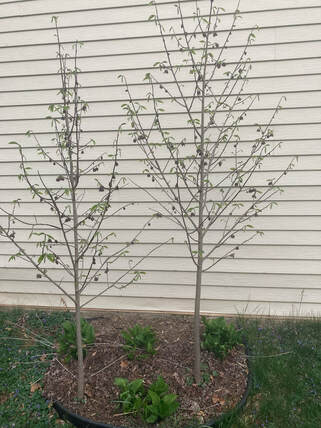 Paw paw trees next to the garage; Photo: Patrice Nielsen Paw paw trees next to the garage; Photo: Patrice Nielsen What is the most amazing thing you have experienced in nature? “When I was a student at Brigham Young University-Idaho, I had to take one GE physical science class to complete my degree,” Patrice explained. The choice was between astronomy and physics. “Since physics wasn’t my strength and astronomy sounded a lot more fun, I chose astronomy.” Patrice drove to a nearby hilltop outside of town to observe moon phases. “All of a sudden the sky was filled with ribbons of color – yellows and greens filled the whole sky,” she described. She was seeing the Northern Lights at a time they were not usually visible. “It only lasted a few minutes and it was surreal. I have never seen anything like it since.” Describe what you do on your own property (house, farm, woods, etc.) to support a healthy ecosystem. “My husband and I found this delightful community of homes that had been built in the 1970s. The developers constructed each house on 1/5 of an acre, as opposed to the standard ¼ of an acre. They then set aside that excess land not dedicated to each home to create a large central natural area as well as mature woodland strips behind each row of houses. The natural areas have 24 miles of walking trails, springs and a large stream. “We often walk these trails“ Patrice stated. “I have seen owls, red-tailed hawk nests, toads and fireflies, so it has the feeling of living out in the woods while being a DC suburb.” When she and her husband bought the house, there was only grass surrounding the house with one lone maple tree in the backyard. “There were no flower beds, no shrubs – just a turf landscape.” Patrice and her husband have added several flower beds, a vegetable garden, a small orchard, and many native trees including eastern redbud, black locust, tulip poplar, pawpaw, and a spruce tree. “As a result, we have attracted a variety of wildlife to the area. I have seen a bumble bee nest in one of my flower beds and box turtles regularly travel through.” Their big challenge now is that bamboo has grown up in a nearby spot of in the wooded area across the walking trail from her vegetable garden. “We have successfully killed one of the two bamboo cores by chopping it down to the ground and repeatedly pouring boiling water over it.” Patrice touts that this is an excellent way to get rid of bamboo. “But you first have to cut everything down to the core.” Their aim is to remove that second bamboo core this year.
How did you first become interested in Monarch butterflies?
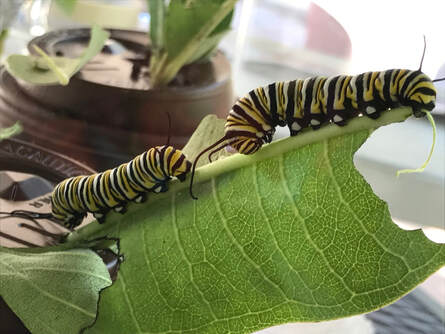 Monarch butterfly caterpillars on milkweed leaves; Photo: Carolyn Smith Monarch butterfly caterpillars on milkweed leaves; Photo: Carolyn Smith What is the importance of Monarch butterflies? Why do we monitor the different phases of their lives (egg, caterpillar and butterfly)? Is this a local, statewide, national, or international effort? Carolyn explained that Monarchs, like polar bears, are an iconic species whose future is not assured. “Monarchs undertake an amazing migration each year, whose secrets scientists are still trying to unlock. But their numbers have declined so much that the migration is at risk,” she said. “A number of groups across North America came together to create the Monarch Joint Venture, a partnership of nonprofits, state agencies and academic programs trying to conserve the monarch migration. One of the partners is the Monarch Larva Monitoring Project (MLMP) at the University of Wisconsin. Since 1997 its scientists have enlisted the help of citizen scientists to collect information on Monarch distribution and milkweed habitat. Carolyn has established her farm as a registered site where she and other volunteers collect data on Monarchs, which is then reported to MLMP. “Citizen scientists like our monitoring group are studying all stages of Monarchs from egg to butterfly in order to provide data to researchers,” she explained. “These data have informed scientists on what threatens Monarchs and what role people can play to help them survive.” Carolyn noted that data have led scientists to confirm that the early stages are when the greatest mortality occurs. What is involved in monitoring Monarchs? Does it take special skills or training? Carolyn explained that Monarch monitoring requires volunteers to learn what the different instars (larval stages of caterpillars) look like, and where to look on a plant for eggs and caterpillars. “It’s not difficult,” she said, “but it definitely takes some practice for most folks to learn to correctly identify what instar they are seeing.” She related how excited her monitoring group gets when they find the first egg, the first caterpillar, or see adult Monarchs flying around the milkweed patch. “There is such excitement and joy when you find one of these delicate creatures and know that you are helping to assure that Monarchs will continue to be enjoyed by people everywhere,” she explained. 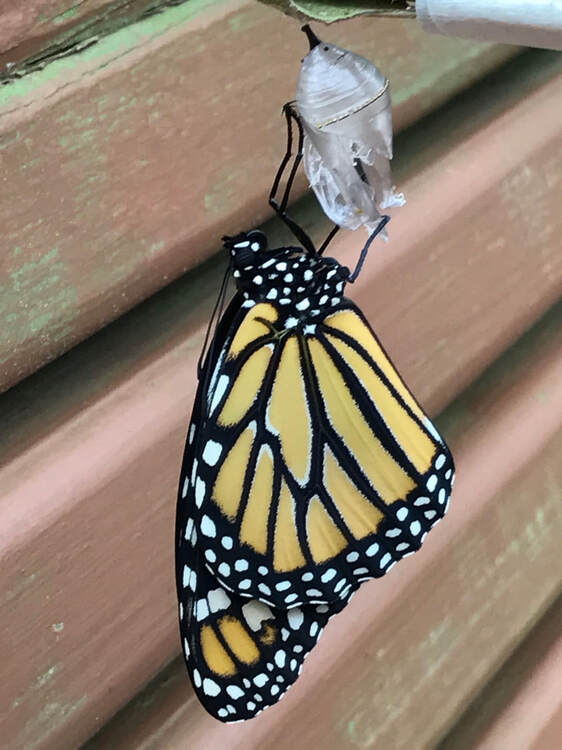 Monarch butterfly; Photo: Carolyn Smith Monarch butterfly; Photo: Carolyn Smith Are Monarch populations increasing, decreasing or staying the same? “The data show differences in Monarch population totals from year to year, sometimes up and sometimes down. But the overall trend is clearly a marked decline,” Carolyn noted. She said that between last year’s and this year’s numbers, there was a 22% drop in the number of Monarchs that overwintered in Mexico, where most eastern Monarchs go to spend the winter. What are the threats to Monarch survival? Carolyn said that Monarchs have a lot of predators, including birds, spiders and grasshoppers. “But the loss of habitat is one of the biggest threats to Monarch populations,” she noted. That has been exacerbated by the broad application of insecticides that many farmers use. “Over the last 20 years, ‘Roundup-ready’ crops are being planted and entire fields are being sprayed, as opposed to selective spraying that had been the practice before,” Carolyn explained. There has also been a loss of overwintering habitat in Mexico. What can ORMN members and others do to help support Monarch butterflies? “Plant milkweed and nectar plants,” she said. She noted that even people who live in cities and towns can help Monarchs by planting the food they need and the milkweed they require to lay their eggs. Carolyn encourages everyone to talk to people about Monarchs. “Just sharing your own admiration of these beautiful creatures may change someone’s behavior.” She shared a conversation she had at her local gym with another member, who then became inspired to plant milkwood and native wildflowers on her property. “Every effort is important,” Carolyn emphasized. “If each one of us told five people about Monarchs, and those five people told five people – you get the picture!” Interviewed by Charlene Uhl March 2023
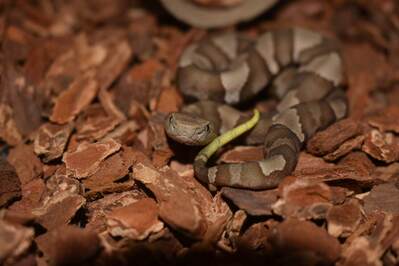 Juvenile broad banded copperhead; Photo: Larry Mendoza Juvenile broad banded copperhead; Photo: Larry Mendoza While completing his Masters in Science in Biology, Larry took a side job for a snake removal company. He noted that it is against the Virginia law to relocate snakes so unfortunately the first course of action by these businesses is to destroy the snakes that have come into people’s dwellings and outbuildings. He is constantly looking for opportunities to share the important role that snakes play in the environment. “A couple of snakes in your yard will take care of your rodent population,” he said. “If you have chickens, snakes will make sure your hen house is free of rodents,” he noted. “If they take an egg or two once in a while, it seems like a fair exchange for their protection,” he said with a grin. When and how did you become interested in nature and the natural world? “My earliest memory of nature was dinosaurs,” Larry stated. “They looked so much like dragons.” This led to a love of reptiles of all kinds. There was a particular park his family visited frequently that he recalled being “filled with lizards.” He was not allowed by his mother to bring any home – but one day he caught a lizard, put it in a cup, and snuck it into their car. Unfortunately the lizard jumped out of the cup and he couldn’t find it. He has a vivid memory of what happened next. “Two days later my mother was eating fast food in the car while waiting for his father to run an errand on base and the lizard jumped up into her lap, “ Larry said. “My mother threw her French fries into the air and screamed.” Describe what you do on your property to support a healthy ecosystem. Larry and his wife live in Glen Allen, about 20 minutes from Richmond. While the 295 interstate is close by, his home is in a wooded area where it is easy to get out and enjoy nature. “I’ve stopped raking leaves,” Larry said, explaining the importance of letting leaf debris decompose into a natural soil amenity. One of his best friends is a leader in the Virginia Native Plant Society and is urging Larry to plant natives on his land. “I know he would be a consultant – and might actually offer to do the planting for me,” Larry said with a smile. He definitely wants to make part of his yard a place for Monarch butterflies. “Their life cycle is simply amazing,” he stated, “and I’d like to be part of the effort to create the habitat they need to survive and thrive.” What is the most amazing thing you have experienced in nature? One of the most amazing moments in nature he experienced was when he and his wife were on vacation at Bethany Beach Delaware. It is normal to see pods of dolphins out in the distance on the Atlantic coast from a beach, but what was really amazing was when he was swimming and dove under water, he could hear the dolphins calling and making sounds. “It was so neat to actually hear them under water as they were chatting away and communicating, probably organizing hunting or who knows” he related. “But that was an amazing experience.” 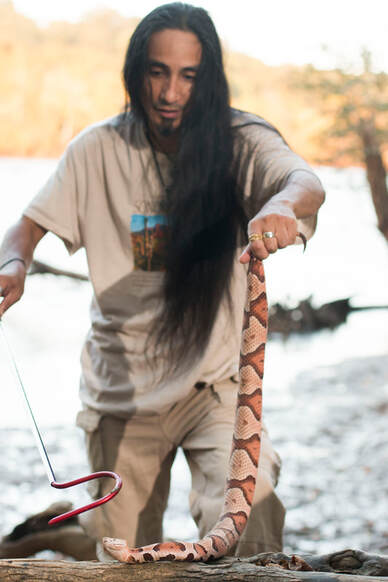 Larry Mendoza with Eastern copperhead (Agkistrodon contortrix); Photo: Julianne Tripp Larry Mendoza with Eastern copperhead (Agkistrodon contortrix); Photo: Julianne Tripp What is something you would like to share with ORMN members? Larry serves as the Chair of the Regulatory Affairs Committee of the Virginia Herpetological Society (“a one-man show”) where he is an advocate and liaison with the community. He is also on the educational outreach committee and travels all over Virginia, giving talks, tabling at various events, meeting with educators, outreach coordinators, and others to share his knowledge of snakes and to help more people appreciate the invaluable role they plan in the natural world. He has presented to a number of Master Naturalist chapters in Virginia as well as given talks to preschools, and emergency management certification courses on snake bite treatment and venomous snake identification to help them better understand the physiology, behavior and value of snakes in Virginia. This liaison role led to Larry appointment as stakeholder to the Virginia Department of Wildlife Resources planning group, which was charged with developing a plan to encourage people to view wildlife. “VDWR never had a position or information on viewing wildlife so the planning group asked a researcher from Virginia Institute of Technology (VTEC) to help. With the help of this VTEC researcher we developed a statewide plan with goals and milestones that were published in 2021,” Larry explained. He is very proud to have been a part of this effort and looks forward to more opportunities to give back to the community. Interviewed by Charlene Uhl, January 2023 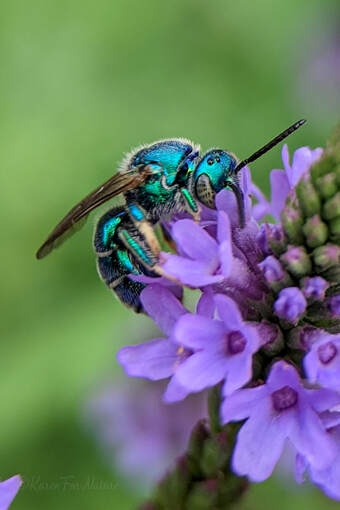 Macro photo of native bee enjoying the native, Verbena hastata; Photo: Karen Tavakoli Macro photo of native bee enjoying the native, Verbena hastata; Photo: Karen Tavakoli Karen Tavakoli’s family moved to Illinois when she was nine years old, which allowed the family to realize their dream of having a horse farm. Their farm was surrounded by thousands of acres of land that was farmed by local farmers for hay or crop production. The barter system was actively utilized, and as her family became part of the community, she and her sister also became part of the farming workforce. . “I was hooked from the start,” said Karen. In exchange for helping in the hayfields, a local farmer would have his son help them unload the square bales for their horses and stack them in their farm’s hayloft. She learned to drive and operate the hay baler the very next year. In her teens, she learned to plow fields, run the combine, and move semi-trucks around the fields for easier staging. “Although I loved farming and growing things,” she explained, “the challenges and hardships I observed made me choose a different career path when the time came.” Her own family faced hardship during the 2008 recession which led them to move to Virginia. When she graduated from high school, Karen knew she wanted to make a difference so she enrolled in college part-time and became a firefighter/EMT with plans to continue her education, with the goal of eventually becoming a nurse. After about five years working as an EMT in the emergency room at the Level 1 Trauma Center in Fairfax and continuing to take college classes, “I realized I was miserable and wanted to go back to what truly made me happy - growing plants and being out in nature.” She gave notice at the hospital, didn’t sign up for any more college classes and began to study and read all she could about landscaping with nature and native plants. She also started to help friends and neighbors with small landscaping projects around their homes. This led to applying for a position at Fauquier Spring Country Club as a horticulturist. Karen noted that most of the plant beds on the country club grounds were filled with annuals that were pulled up and discarded at the end of the season. She started to work with a local wholesale company – Owl Run Nursery – to introduce perennials and shrubs around the golf course. During one of her visits to Owl Run Nursery, she mentioned to the owner that she was currently studying for the chemical applicator’s license. He wanted to hire her to do some spraying at the nursery but Karen was too busy at the time to take on another task. As the growing season came to an end, so did her position at Fauquier Springs Country Club and she was laid off. During her layoff, the owner of Owl Run Nursery contacted her to see if she was available to come out for a consult “and the rest is history” Karen said with a smile. When and how did you become interested in nature and the natural world? “I can’t recall a moment when I wasn’t interested in nature,” Karen shared, “but I know it started with my parents who are also nature lovers who care about the environment.” Karen recounted how she recently moved and, in the process of unpacking, she found her second grade yearbook. “We had to write something about each month,” she said. “For the month of April, I wrote about how much I loved Earth Day and that ‘every day should be Earth Day!’” Describe what you do on your property to support a healthy ecosystem. Karen has been removing lawn and invasive plants, with the goal of having only 20% being lawn and the remaining 80% planted with a diverse assortment of native shrubs and perennials. While a small number are not native, “I can’t let go of my grandma’s daffodils or peonies”, she explained; “but they are not invasive.” Due to a very abundant mosquito population on rainy days, Karen was motivated to put up bat houses – both to encourage their presence as well as a natural defense system against the mosquitoes. “When I put up the bat houses around my home, several neighbors expressed concern.” The neighbors asked if she wasn’t worried about rabies from the bats. Karen shared the fact that one bat can eat up to 1,000 mosquito-sized insects per hour (whereas the odds of a human getting bitten by a bat is estimated at 1 in one million and getting rabies from a bat bite was about one in 200). “It was a pretty teachable moment,” she said with a big smile. 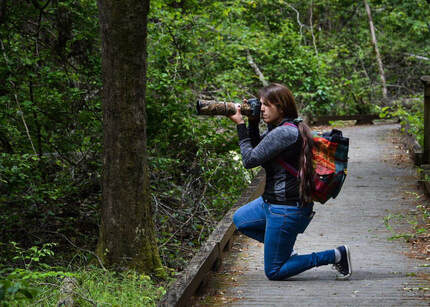 Karen Tavakoli photographing migrating warblers at Great Dismal Swamp; spring 2022; Courtesy of Ophiuchus Photography Karen Tavakoli photographing migrating warblers at Great Dismal Swamp; spring 2022; Courtesy of Ophiuchus Photography What is the most amazing thing you have experienced in nature? Karen noted that she spends a lot of time in nature and as a result, has had many amazing experiences. She offered the back story to her choice of her most amazing experience: Karen started working at Owl Run Nursery almost five years ago when there were many techniques that are no longer practiced. Due to the poor soil on the nursery property, which was primarily due to construction soil that had been used to level the ground, her boss began to grow trees above ground in bags (a very progressive practice at the time). But the nursery still sprayed an herbicide around the base of each bag, leaving the ground mostly bare or covered with invasive plants. In her role as a manager/grower, she quickly did away with this practice, slowly beginning to remove invasive plants and encourage natives to re-establish themselves. Since initiating this promotion of natives, Karen has counted over 80 species of native plants that now grow beneath the nursery trees. ”This year I had three amazing new finds,” she shared. “In the spring two native ferns – Christmas fern (Polystichum acrostichoides) and sensitive fern (Onoclea sensibilis) – had established themselves under the canopy of the bag-grown trees. In July, she found a Dyemaker’s Puffball (Pisolithus tinctorius) growing in the tree bag with her white oaks. “It was like receiving a message of thanks from nature,” she said. For Karen, it is a confirmation that she is replicating nature in her nursery practices. What is something you would like to share with ORMN members? Karen loves opportunities to educate people: neighbors, friends, customers, anyone who will listen to her – as her bat house story demonstrates. Karen is also exploring wildlife photography, particularly taking pictures of birds. She has photographs from her hikes along the Appalachian Trail as well as from the different habitats on the nursery grounds. She also is a big fan of Doug Tallamy’s book, Bringing Nature Home: How You Can Sustain Wildlife with Native Plants. Karen believes that we can all live harmoniously with nature. She feels she is in the exact right place to help nursery practices be improved to be more “green”. Interviewed by Charlene Uhl, October 2022 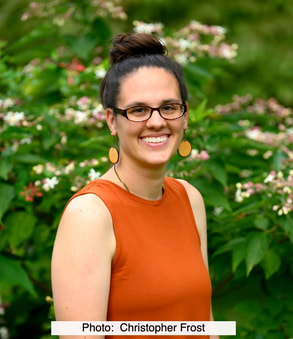 Photo: Christopher Frost Photo: Christopher Frost CLICK HERE to watch Alison Zak's October 2022 presentation. NOTE -- the first 9 minutes have captions but poor audio quality. This is remedied for the final 51 minutes. Alison Zak, born in Tampa, Florida, earned her undergraduate degree at the University of South Florida, and then went on to get her masters in anthropology at San Diego State University where she studied primatology and human-wildlife conflict. She worked for six years in environmental education and outreach, including at the Potomac Valley Audubon Society, the National Zoo, and most recently at the Clifton Institute. Alison is also an Emerging Wildlife Conservation Leader (Class 9), writer, and yoga teacher. Alison is founder of the Human-Beaver Coexistence Fund (HBCF), an organization dedicated to educating the public about the benefits of coexisting with beavers. The organization provides informational resources and financial support to help address human-beaver conflict using nonlethal management strategies. Partners include the Clifton Institute, Potomac Valley Audubon Society, Green Muslims, Old Town’s Open Book, the Animal Welfare Institute, and Beaver Institute. When and how did you become interested in nature and the natural world? Like most children, Alison was always interested in nature. She had a large collection of stuffed animals as a 5-year old, and when she was in 3rd grade her grandfather gave her a bird field guide to use, which made her decide she wanted to be an ornithologist. She often observed the interaction of people with nature and noted that nature was often discussed as if “people weren’t part of nature.”  Photo: Alison Zak Photo: Alison Zak After becoming a yoga instructor, Alison took great joy in incorporating mindfulness practices in outdoor programs to inspire curiosity and compassion and enhance her clients’ connection with nature. She is fascinated with the many poses that have names associated with nature (e.g., pigeon, downward facing dog, cow-face and of course, Sun Salutation). Alison began to read non-fiction books and essays that discussed the intersection of people and animals and to write about the intersection between people and nature. She also participated in a “pitch competition” on Twitter that resulted in an editor choosing her book proposal on using yoga to connect with animals and nature. Alison's book, Wild Asana, is scheduled to come out in summer 2023. Describe what you do on your property to support a healthy ecosystem. “My husband and I have a townhome in Oakton,” Alison said. “Like most townhomes we have a small fenced-in yard.” They decided about a year ago to convert everything to native plants, with the exception of a single raised bed for growing their own food. They put in two pawpaw trees and “we have even put pots with native plants along the fence outside our yard to extend that ‘natural environment’ and so far no one has complained yet!” Alison and her husband also convinced the townhome association's pest control company not to spray along their fence line. The pest control technician highlighted that the spray would kill spiders--thinking that would be a selling point for the “woman of the house." “My husband said, ‘You don’t know my wife.' " 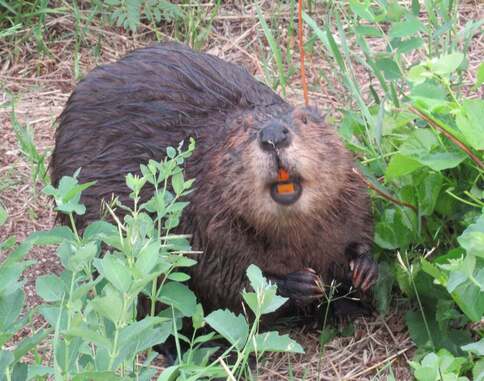 North American beaver (Castor canadensis), Photo: Alison Zak North American beaver (Castor canadensis), Photo: Alison Zak What is the most amazing thing you have experienced in nature? “All of my most amazing and profound nature experiences are in the mountains,” Alison explained. “I feel a sense of connection in the mountains that I don’t feel elsewhere. I feel the love of my grandparents and ancestors in the mountains of West Virginia, my favorite state. I feel closest to the divine above tree line in Rocky Mountain National Park ‘where the sky is the size of forever and the flowers are the size of a millisecond’ (quote by Ann Zwinger). And a few years ago I felt the sheer thrill of sharing habitat with snow leopards (even if I didn’t see them!) in the Indian Himalayas.” What is something you would like to share with ORMN members? “I would like ORMN members to encourage friends and neighbors to view beavers as a ‘natural change agent’ - a species that changes the environment as a part of the natural cycle of life.” Alison noted that beaver activity to create ponds often results in damage to trees as well as flooding of agricultural land. While she is a big supporter of this natural activity, she also realizes that it may jeopardize the income and well-being of landowners. She pointed out that her organization’s name – Human-Beaver Coexistence Fund – has “Human” as the first noun. The well-being of humans and beavers are of equal concern to HBCF! Interviewed by Charlene Uhl, September 2022 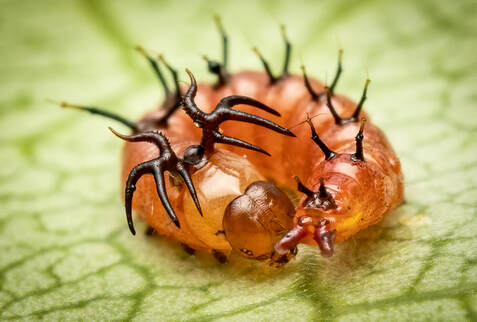 Saddled Prominent (1st instar – just out of the egg); Photo: Lee Alloway Saddled Prominent (1st instar – just out of the egg); Photo: Lee Alloway The son of a career military officer, Lee Alloway was born in Korea and as a U.S. Air Force officer himself, he lived in 10 U.S. states as well as Guam, Germany, Hungary and “the usual unusual locations during deployment.” He has spent a total of 28 years in Virginia, moving here in 2000. Lee graduated with a BS in chemistry during the Vietnam War. His plans for graduate school were derailed by a low draft number and a “Welcome” letter from his draft board. Believing that Vietnam would look better from the air than from the ground, he signed up for a 6-year tour with the Air Force and enjoyed it so much he stayed another 20 years. He worked in Germany and Hungary for a few years after retirement before returning to Virginia, where he worked at the Pentagon for another 14 years. His work and travel has taken him to every U.S. state and more than 100 countries. When and how did you become interested in nature and the natural world? “My earliest memories are of growing up in Georgia with a forest behind the house. I spent most of my free hours roaming the woods, eating blackberries and looking for snakes,” Lee recalls. “I did lots of camping in high school and worked for Kansas City Parks and Recreation as a camp counsellor in the summer during college,” Lee noted. In addition to dogs, cats and birds, Lee had pet snakes (some venomous), coyotes and one skunk. “Interest in nature never left me.” Describe what you do on your property to support a healthy ecosystem. Three years ago, Lee and his wife purchased a house set on three acres abutting Culpeper County's Lake Pelham. Their property is surrounded by 58 acres of forest on one side and the lake on the other side, offering them “plenty of biodiversity to track.” Over the last three years, they have planted native trees and grasses on their land and have nurtured wetland plants and milkweed along the lake shore. The added benefit is “the natives and the fruit and vegetables we grow attract plenty of bugs for me to photograph,” Lee said with a smile. He and his wife also observe many snakes in their area and actually had black snakes denning in their basement their first year in the house. What is the most amazing thing you have experienced in nature? Given his extensive travels and many unique experiences, it’s not surprising that Lee found this a tough question to answer. Here are just a few he shared: ➢ a close encounter with a parrot snake in Belize, a vibrant green snake with an amazing blue tongue; ➢ an unexpected and breathtaking sight of thousands of azaleas blooming at high altitude in the Himalayas; and ➢ the spectacular waterfalls and forests of Bhutan (80% of the country is forested) as well as the sound of thunder echoing through the valleys. “Bhutan (Druk Yul) deserves its name as Land of the Thunder Dragon,” he noted. 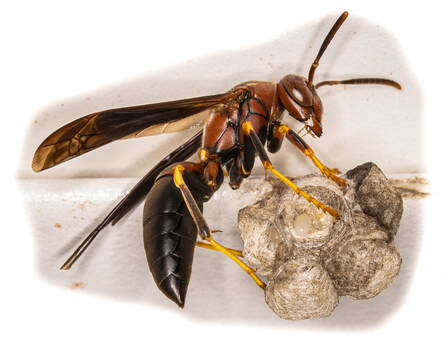 Metric paper wasp showing off its egg; Photo: Lee Alloway Metric paper wasp showing off its egg; Photo: Lee Alloway What is something you would like to share with ORMN members? “I've been a photographer as long as I can remember,” Lee explained. He set up a dark room and processed his own film while he was in elementary school. He noted that his interest in macro photography is more recent, starting about 20 years ago. Lee began going to BugShot workshops, which are photography classes offered in the United States and around the world that focus on the local insects. When the pandemic hit and stopped him from traveling, he began to focus on photography of local bugs. His surprise at the diversity of local insect life convinced him to share his findings with his neighbors.  Robberfly does yeoman’s work eating all manner of garden pests; Photo: Lee Alloway Robberfly does yeoman’s work eating all manner of garden pests; Photo: Lee Alloway “My mother and sister were both librarians, so I grew up around books and have several thousand books in my own library” Lee related. “I have written songs and poetry most of my life but only got around to publishing anything in 2010.” Over the last two years, Lee decided to combine his publishing experience and his photography of local insects by self-publishing three books on insects, which are all illustrated with his photographs. “I begrudgingly accept the advent of e- books and have produced e-versions of most of my recent books,” Lee noted. His three latest books (Wazzat Lep?, Wazzat Bug? and Wazzat Beetle?) feature some of the 1,000 species Lee found one season, which he says speaks well of our biodiversity here in central Virginia. His books can be found on Amazon, a local bookstore in Orange called Spelled Ink and directly from his own company - Ancient Eagle Press (https://ancient-eagle-press.square.site/) Interviewed by Charlene Uhl, April 2022 |
AuthorWrite something about yourself. No need to be fancy, just an overview. Archives
December 2023
Categories
All
|
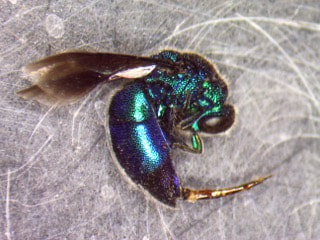
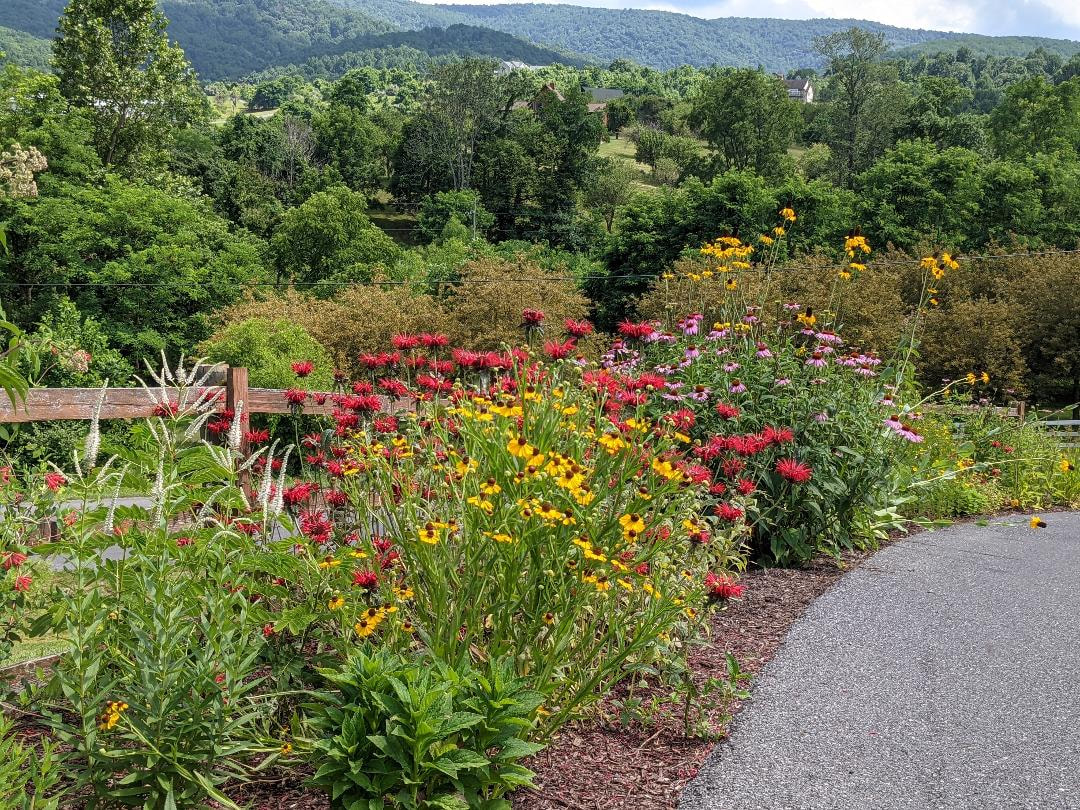
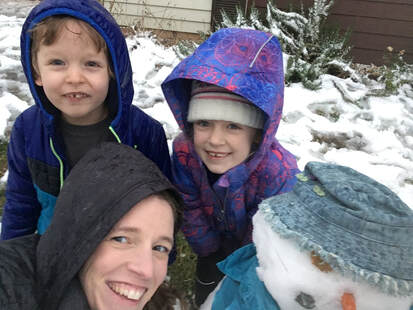
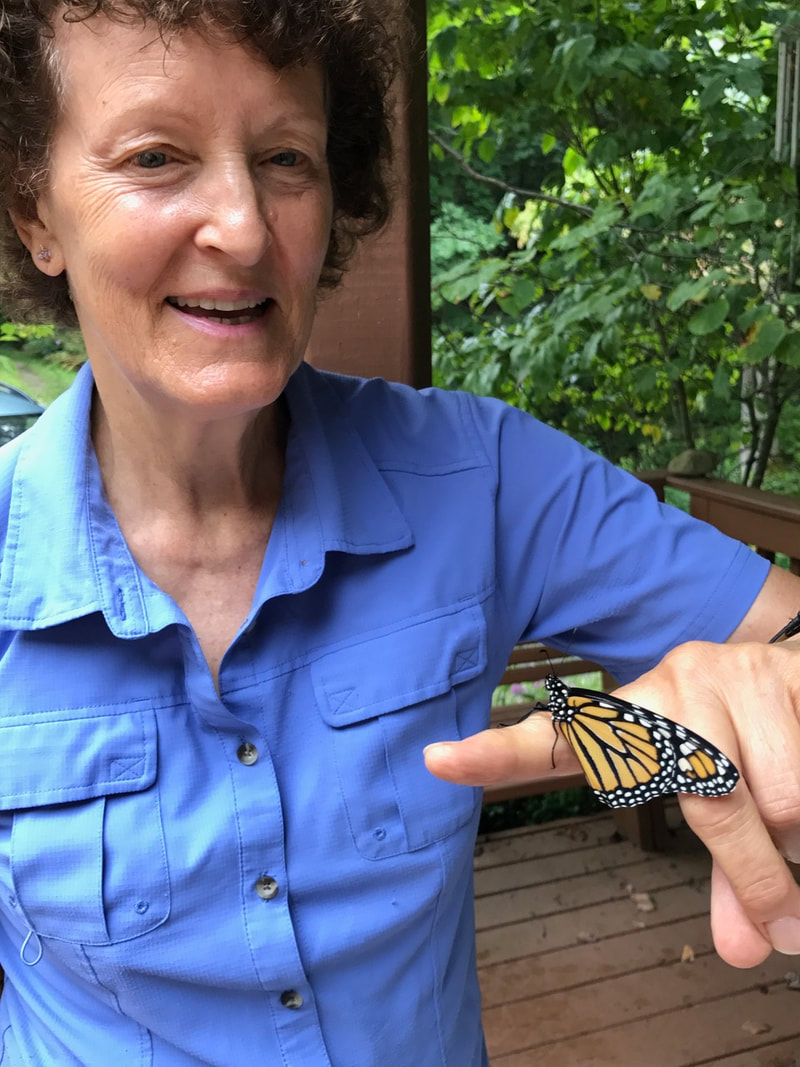
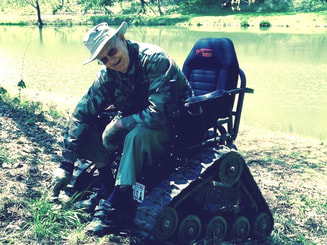
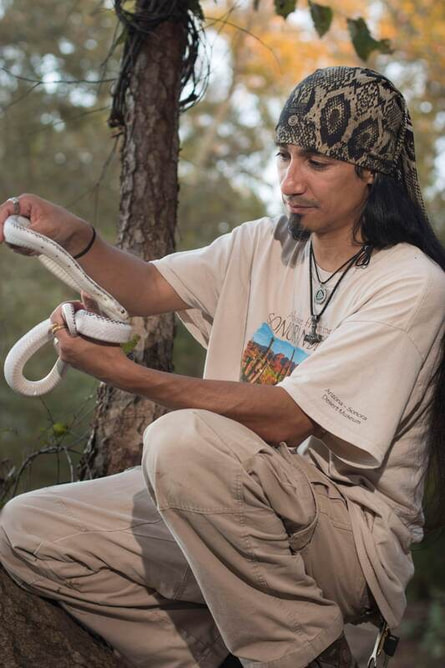
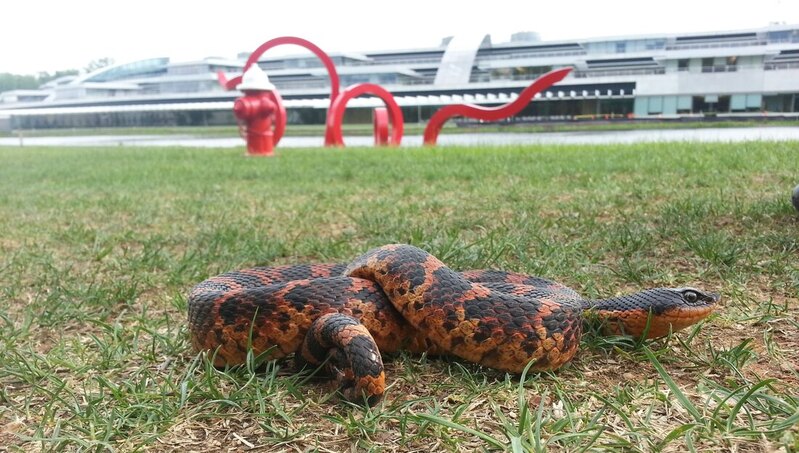
 RSS Feed
RSS Feed